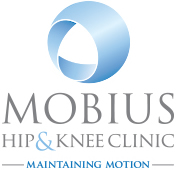
Hip arthroscopy
Arthroscopy is a surgical procedure that gives us a clear view of the inside of a joint. This helps us diagnose and treat joint problems. During hip arthroscopy, we insert an arthroscope into your hip joint. This camera displays pictures on a television screen.
We may recommend hip arthroscopy if the patient has a painful condition that does not respond to non-surgical treatment. Non-surgical treatment includes rest, physical therapy, and medications or injections that can reduce inflammation.
Hip arthroscopy may relieve painful symptoms of many problems that damage the labrum (a fibrous band round the rim of the joint socket), particular cartilage, or other soft tissues surrounding the joint. Although this damage can result from an injury, other orthopaedic conditions can lead to these problems, such as:
- Femoroacetabular impingement (FAI)
- Dysplasia
- Snapping hip syndromes
- Synovitis
- Loose bodies
- Hip joint infection
Hip arthroscopy is usually conducted under general anaesthesia. At the start of the procedure, the leg will be put in traction. This means that the hip will be pulled away from the socket enough for the surgeon to insert instruments, see the entire joint, and perform the treatments needed. After traction is applied, we will make a small puncture in the hip (about the size of a buttonhole) for the arthroscope. Through the arthroscope, we can view the inside of the hip and identify any damage. We will insert other instruments through separate incisions to treat the problem. Depending on the condition, a range of procedures can be carried out. For example:
- Smooth off torn cartilage or repair it
- Trim bone spurs caused by FAI
- Remove inflamed synovial tissue
The length of the procedure will depend on the amount of work to be done. In most cases, the surgery takes from 1-2 hours.
Though complications from hip arthroscopy are not so common, any surgery in the hip joint carries a small risk of injury to the surrounding nerves or vessels, or the joint itself. The traction needed for the procedure can stretch nerves and cause numbness, but this is usually temporary. There are also small risks of infection, as well as blood clots forming in the legs (deep vein thrombosis).
After surgery, patients will stay in the recovery room for 1 to 2 hours before being discharged home. Patients can also expect to be on crutches, or a walker, for some period. In most cases, physiotherapy is necessary to achieve the best recovery. Specific exercises to restore the strength and mobility are important.
Many people return to full, unrestricted activities after arthroscopy. However, in some cases, the damage can be severe enough (e.g. severe arthritis) that it cannot be completely reversed and the procedure may not be successful.





